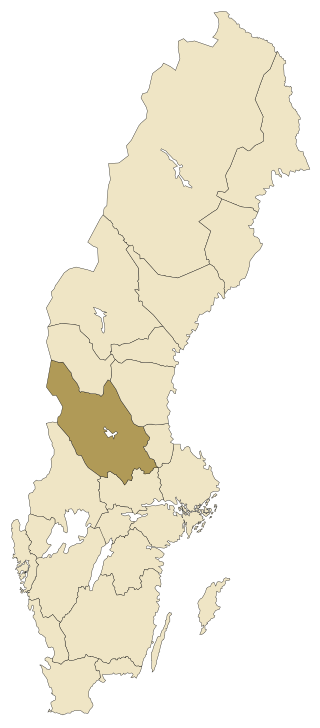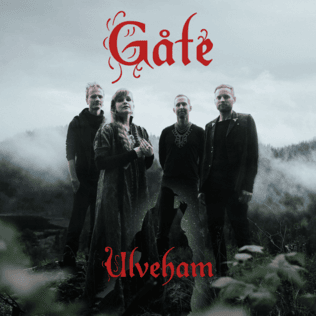
The human voice consists of sound made by a human being using the vocal tract, including talking, singing, laughing, crying, screaming, shouting, humming or yelling. The human voice frequency is specifically a part of human sound production in which the vocal folds are the primary sound source.

Overtone singing, also known as overtone chanting, harmonic singing, polyphonic overtone singing, or diphonic singing, is a set of singing techniques in which the vocalist manipulates the resonances of the vocal tract to arouse the perception of additional separate notes beyond the fundamental frequency that is being produced.

Singing is the act of creating musical sounds with the voice. A person whose profession is singing is called a singer, artist or vocalist. Singers perform music that can be sung with or without accompaniment by musical instruments. Singing is often done in an ensemble of musicians, such as a choir. Singers may perform as soloists or accompanied by anything from a single instrument up to a symphony orchestra or big band. Different singing styles include art music such as opera and Chinese opera, Indian music, Greek music, Japanese music, and religious music styles such as gospel, traditional music styles, world music, jazz, blues, ghazal, and popular music styles such as pop, rock, and electronic dance music.

Dalarna is a landskap in central Sweden. English exonyms for it are Dalecarlia and the Dales.

Yodeling is a form of singing which involves repeated and rapid changes of pitch between the low-pitch chest register and the high-pitch head register or falsetto. The English word yodel is derived from the German word jodeln, meaning "to utter the syllable jo". This vocal technique is used in many cultures worldwide. Recent scientific research concerning yodeling and non-Western cultures has shown that music and speech evolved from a common prosodic precursor.
A purr or whirr is a tonal fluttering sound made by some species of felids, including both larger, outdoor cats and the domestic cat, as well as two species of genets. It varies in loudness and tone among species and in the same animal. In smaller and domestic cats it is known as a purr, while in larger felids, such as the panther, it is called a whirr.

Malung is a locality and the seat of Malung-Sälen Municipality, Dalarna County, Sweden, with 5,126 inhabitants as of 2010.
Swedish has a large vowel inventory, with nine vowels distinguished in quality and to some degree in quantity, making 18 vowel phonemes in most dialects. Another notable feature is the pitch accent, a development which it shares with Norwegian. Swedish pronunciation of most consonants is similar to that of other Germanic languages.
Stød is a suprasegmental unit of Danish phonology, which in its most common form is a kind of creaky voice (laryngealization), but it may also be realized as a glottal stop, especially in emphatic pronunciation. Some dialects of Southern Danish realize stød in a way that is more similar to the tonal word accents of Norwegian and Swedish. In much of Zealand it is regularly realized as reminiscent of a glottal stop. A probably unrelated glottal stop, with quite different distribution rules, occurs in Western Jutland and is known as the vestjysk stød. The word stød itself does not have a stød.
Anita Hegerland is Norway's biggest selling solo artist. She is a singer, most known for her childhood career in Scandinavia, Germany, Switzerland, Austria, The Netherlands, Belgium, and Luxembourg, and subsequent vocal contributions to Mike Oldfield's work, among others. She is one of Norway's best-selling female artists in history. In 1971, she was, along with Michael Jackson, one of the world's best-selling child singers.
Throat singing refers to several vocal practices found in different cultures worldwide. These vocal practices are generally associated with a certain type of guttural voice that contrasts with the most common types of voices employed in singing, which are usually represented by chest (modal) and head registers. Throat singing is often described as producing the sensation of more than one pitch at a time, meaning that the listener perceives two or more distinct musical notes while the singer is producing a single vocalization.
Evolutionary musicology is a subfield of biomusicology that grounds the cognitive mechanisms of music appreciation and music creation in evolutionary theory. It covers vocal communication in other animals, theories of the evolution of human music, and holocultural universals in musical ability and processing.

A roar is a type of animal vocalization that is loud, deep and resonating. Many mammals have evolved to produce roars and other roar-like vocals for purposes such as long-distance communication and intimidation. These include various species of big cats, bears, pinnipeds, deer, bovids, elephants and simians.

Karin Rehnqvist is a Swedish composer and conductor of classical music. She composes chamber music, orchestral works, music for the stage, and particularly vocal music, incorporating elements of folk music such as the vocal technique of Kulning. In 2009 she was appointed the first female professor of composition at the Royal College of Music in Stockholm.

Susanne Rosenberg ) is a Swedish folk singer, professor, and researcher.

Anna-Maria Hefele is a German overtone singer. Hefele is from Grafing near Munich.
"Fun" is a song by British alternative rock band Coldplay, featuring Swedish singer Tove Lo. It is the sixth track from their seventh studio album, A Head Full of Dreams (2015). The song was produced by the band's long-time record producer Rik Simpson along with Norwegian production duo Stargate.

The Swedish Red Polled, Swedish: Rödkulla, is a Swedish breed of domestic cattle. It is a dual-purpose breed, raised both for its milk and for its meat.
"All Is Found" is a song from the 2019 Disney film Frozen II. The song is performed by Evan Rachel Wood as Queen Iduna, the mother of Anna and Elsa, and written by Kristen Anderson-Lopez and Robert Lopez.

"Ulveham" is a song by Norwegian folk rock and metal band Gåte. It was originally released 12 December 2023 on the EP Vandrar as a track. It was later shortened and re-published as a single upon its selection to participate in Melodi Grand Prix 2024. The song ultimately won the selection and will thus represent Norway in the Eurovision Song Contest 2024. It is Norway's first Eurovision entry since 2006 to be sung in Norwegian.











